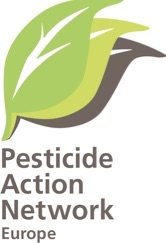Today, 12 years have passed since the Regulation on pesticide residues in food (Reg. 396/2005) was adopted and Commission, Council and EU parliament jointly decided that the harmful effects of mixtures of pesticide residues in food have to be taken into account in standard setting (Art.14.2[1]). Food Authority EFSA was assigned to develop the methods to assess mixture effects, but up to this day these methods are not published and mixture effects not taken into account. Current EU food standards for pesticide residues therefore are not safe.
Up to 28% of all fruit and vegetable products on the markets contains more than one pesticide (see Figure, EFSA data); for grapes and strawberries 15 different pesticides in one sample is not uncommon. EU citizens are consuming dozens of pesticides every day. The current 'safe' EFSA standards however assumes that EU citizens eat only one pesticide in their entire lifetime; this is completely unrealistic and unscientific. The main reason for the delay in the protection of citizens for these 12 years is that the development of methods is not independent and objective; EFSA allows industry to have a big say in their expert panels and EFSA relies on industry EU Framework programs.
The development of methods was frustrated first by the EFSA's PPR panel with several experts connected to industry/ILSI[2] (an expert network that also infiltrated WHO) and played down the relevance of harmful mixture effects. Only after an intervention of DG SANCO in 2011[3], EFSA started working on methods but now relied on the EU framework program 'Acropolis' that was managed by Food Trader Freshfell. The method promoted by Acropolis is a statistic one with little relevance to reality and developed to dismiss the highest analysed pesticide residue data. PAN Europe's Martin Dermine concludes that „regulators have great trust in industry experts who aim to deny science and stick to 50-years old ways of risk assessment to make sure that unsafe standards remain in place. Toxic synergies between pesticides have been clearly demonstrated. This major public health issue is apparently not a priority for EFSA nor for DG Sante”.
[1] 2. With regard to the acts referred to in paragraph 1, account shall be taken of:
(a) the scientific and technical knowledge available;
(b) the possible presence of pesticide residues arising from sources other than current plant protection uses of active substances, and their known cumulative and synergistic effects, when the methods to assess such effects are available;
[2] PAN report A Poisonous injection
[3] PAN report A Poisonous injection , page 48
